Evan Blackwell immortalizes an Algona site with wood carvings and cast ceramics
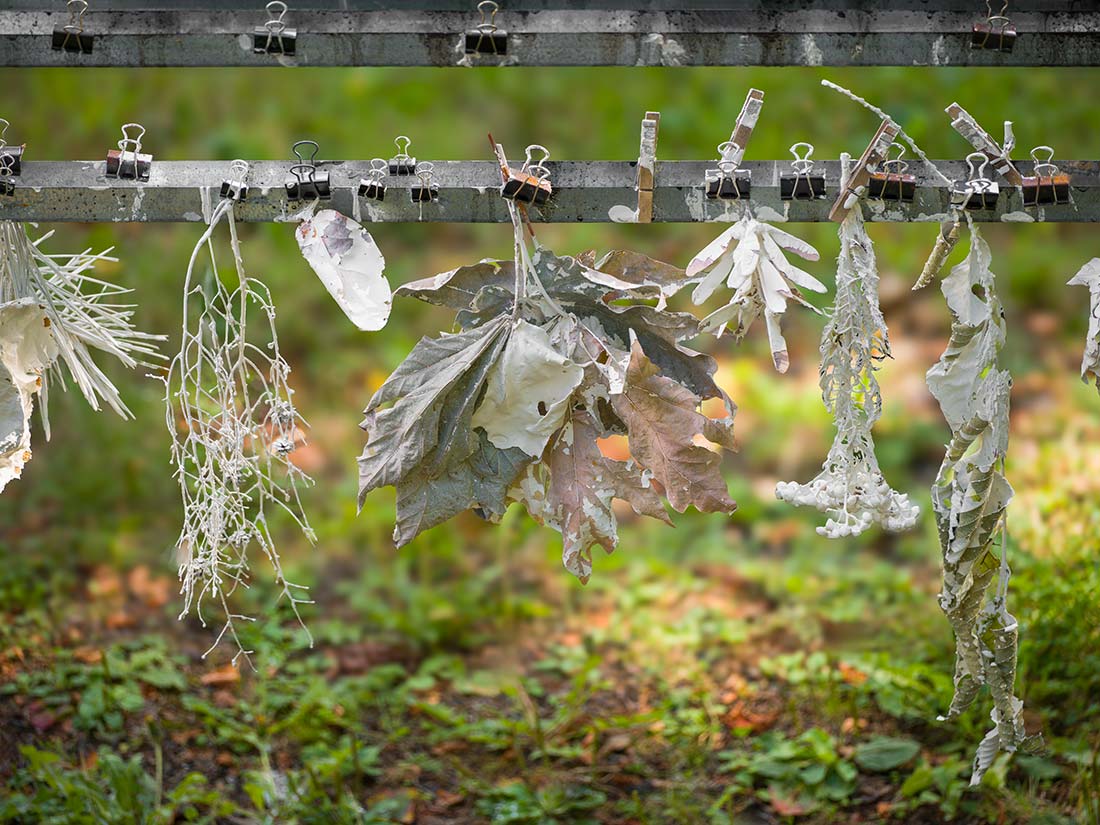
Clusters of long pine needles, maple leaves and spinners, and various other sprigs and stems hang from a slim piece of metal outside Evan Blackwell’s studio in Shelton, WA. Dipped in white porcelain, they’ve been left to dry in the late September sun. “They’re like ghost plants,” Blackwell says. “They feel like bones, like skeletons or remains.”
These bits of flora belong to a body of work he’s producing as part of his five-year residency with King County’s Solid Waste Division, connected to the forthcoming South County Recycling & Transfer Station (SCRTS) in Algona. Tasked with creating several site-based artworks and opportunities for community engagement, Blackwell set about exploring the land and observing county staff, design and engineering consultants, and construction workers manifesting the new facility. Thus began a series of discoveries and transformations.
Unlike many public art projects, Blackwell’s residency doesn’t involve major engineering— no fabrication team or installation to withstand the elements. Instead, the residency, which will conclude when SCRTS opens next year, is about a deep and sustained connection to both people and place.
A sculptor and installation artist who works with a wide range of materials, Blackwell studied the SCRTS site to see what it had to offer and where it might lead him. What could he use to imbue his work with a sense of the place?
“At first, I was fixated on the human detritus there,” he says. But soon his focus turned to the natural materials he found, like rocks. He tried melting them to see if they would become a glaze.
As he experimented with materials from the site, Blackwell became increasingly interested in its native plants and trees: cedar, maple, fir, alder, Oregon grape, and Washington huckleberry among them. They carried a living record, shaped by the rocky soil, cycles of growth and decay, renewal, and resilience.
“Red alders eat rock,” Blackwell says. “They also add nitrogen to the soil and promote mushroom growth.” As nitrogen fixers, the trees extract calcium and phosphorus and release minerals that support new plant growth. This dynamic inspired him to carve a series of rock forms from alder wood felled during construction.
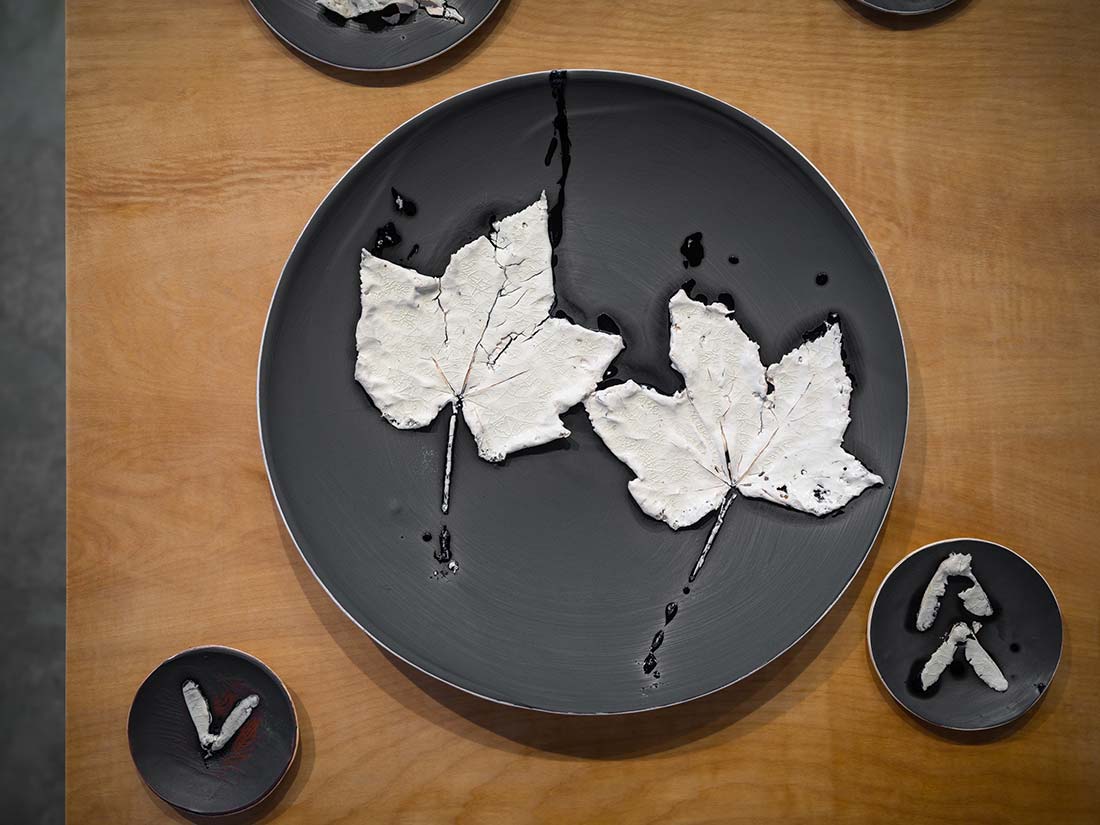
To further “immortalize” plants from the site, Blackwell tried drying different species and dipping them in porcelain. It didn’t always work. “Some leaves and berries reject it,” he says, explaining that the porcelain sometimes slides right off. He also found that some clays worked better than others: There has to be enough give in the plant material for the clay to shrink as it dries, and the clay must also hold up when the organic matter burns away during firing, often causing the pieces to move unpredictably in the kiln.
“The sense of surprise is really fun,” Blackwell says. “Every kiln load is something new.”
Different glazes produced a similar variability—from colors to crazing. Blackwell conducted countless experiments to find the right fit between the clay and glaze before settling on a winning combination. “I’m like an alchemist now,” he laughs.
To frame and present the white porcelain plants, Blackwell casts shallow ceramic discs in plaster molds. After firing, he coats each disc with a cobalt slip that matures to a dense, near-black surface. He then sets the porcelain-dipped plants onto the discs, letting a few drips remain. In the kiln, the slip fuses the porcelain forms to the disc; where the drips thin or pool, the cobalt breaks to blue. The finished effect is a delicate vanitas—contrasting life and death.
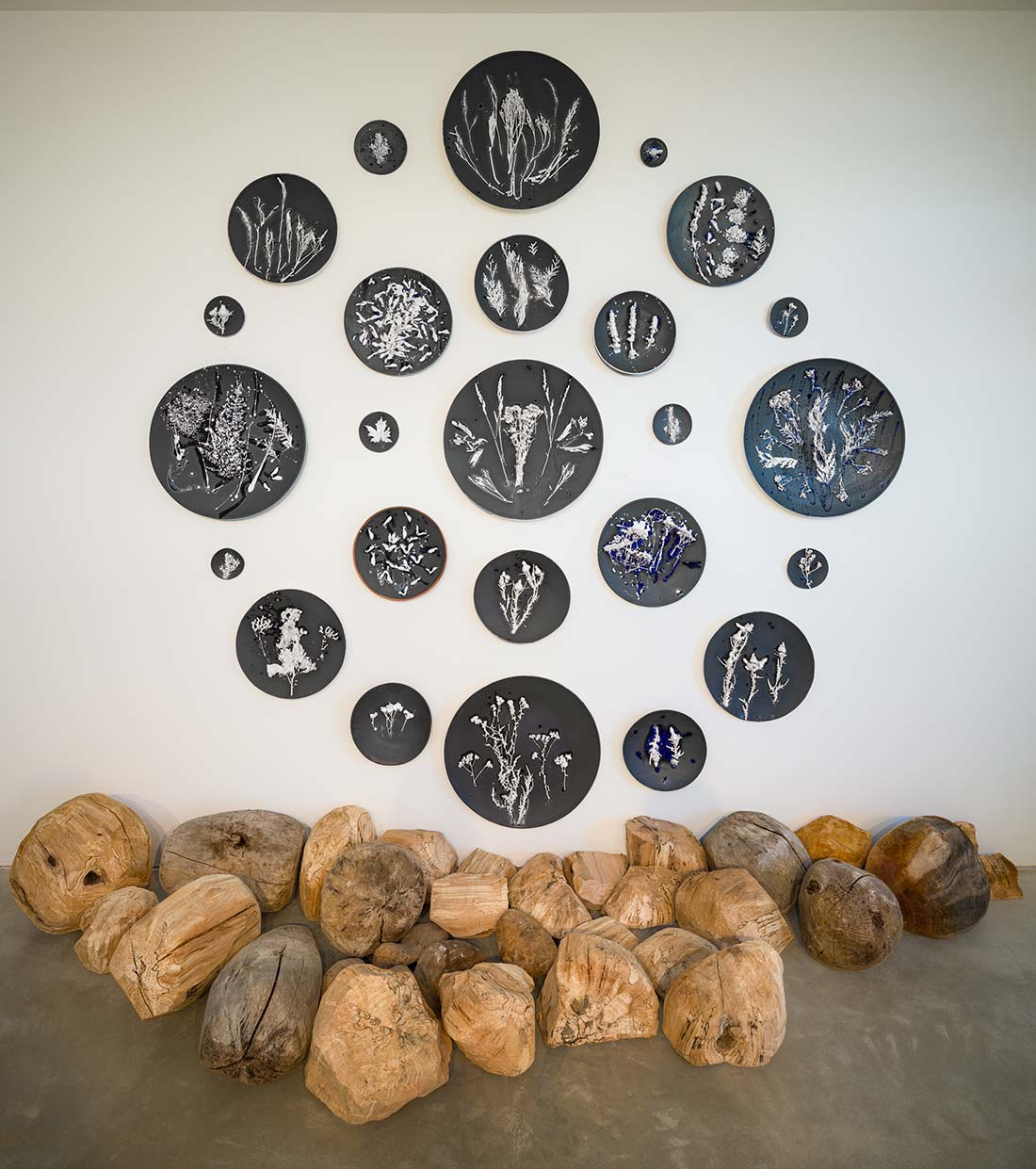
Inside his studio, Blackwell has arranged about 20 of the discs on a wall in a pattern that emphasizes their circular shape and rhythm, with the alder rocks arrayed on the floor below them. Ultimately, his final finished pieces will be similarly displayed in the lobby of the SCRTS administrative building. He’s also producing a collection of slip-cast hard hats to honor the construction workers who are building the new SCRTS facility. The real hard hats they wear are often covered in stickers, scratches, and bits of concrete.
“They tell a story,” Blackwell says, about workers’ own histories and the jobs they’ve been on. That story speaks to identity, adornment, and the keeping of time. Likewise, the final ceramic hard hats will feature sepia-colored transfers of architectural drawings, partner logos, and other images to mark the creation of SCRTS.
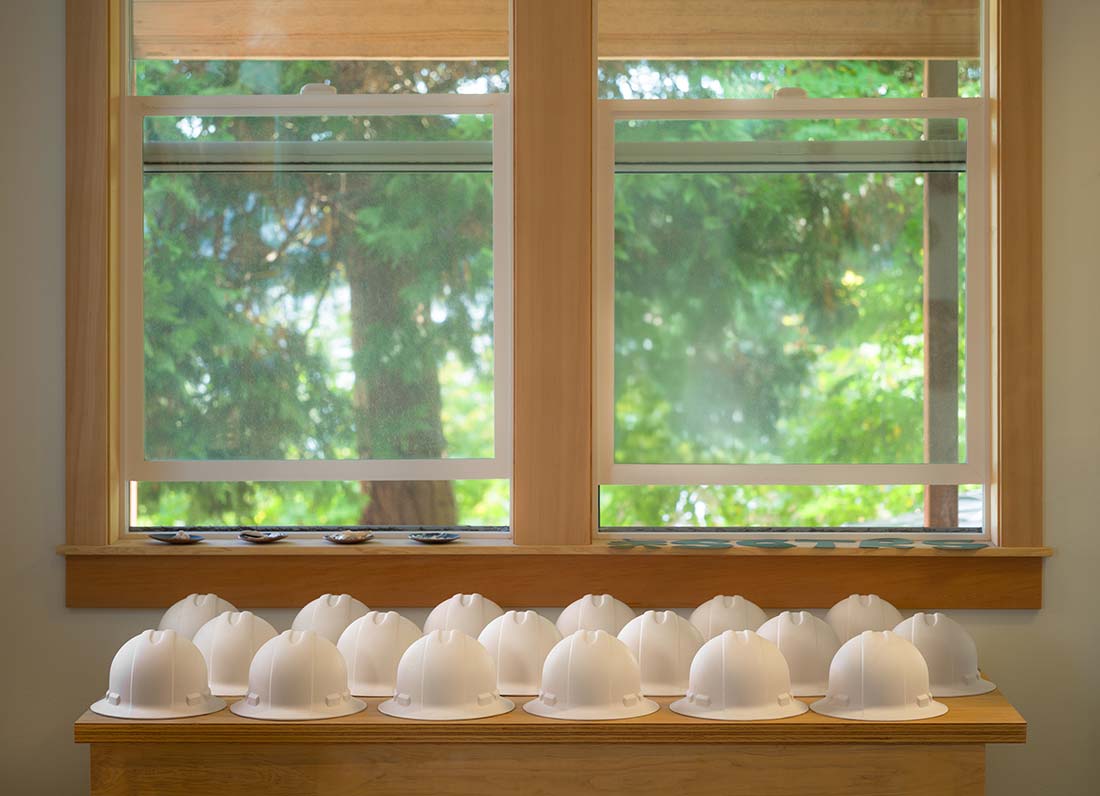
Blackwell has expanded his residency into the community as well, through workshops and collaborative projects that explore the same ideas of material transformation, storytelling, and renewal that shape his art. The environmental stewardship group Dirt Corps helped him rescue and replant saplings from the construction area so they could live on elsewhere—a gesture that echoes Blackwell’s focus on care and continuity. At Auburn Kids Day in 2024, he worked with children to create cyanotypes using plants gathered from the SCRTS site; as sunlight exposed the paper, silhouettes of leaves and stems appeared in vivid blue and white, mirroring the striking contrast found in his ceramics. The following year, youth decorated hard hats with their own stories and handmade stickers, adding a personal layer to the site’s transformation.
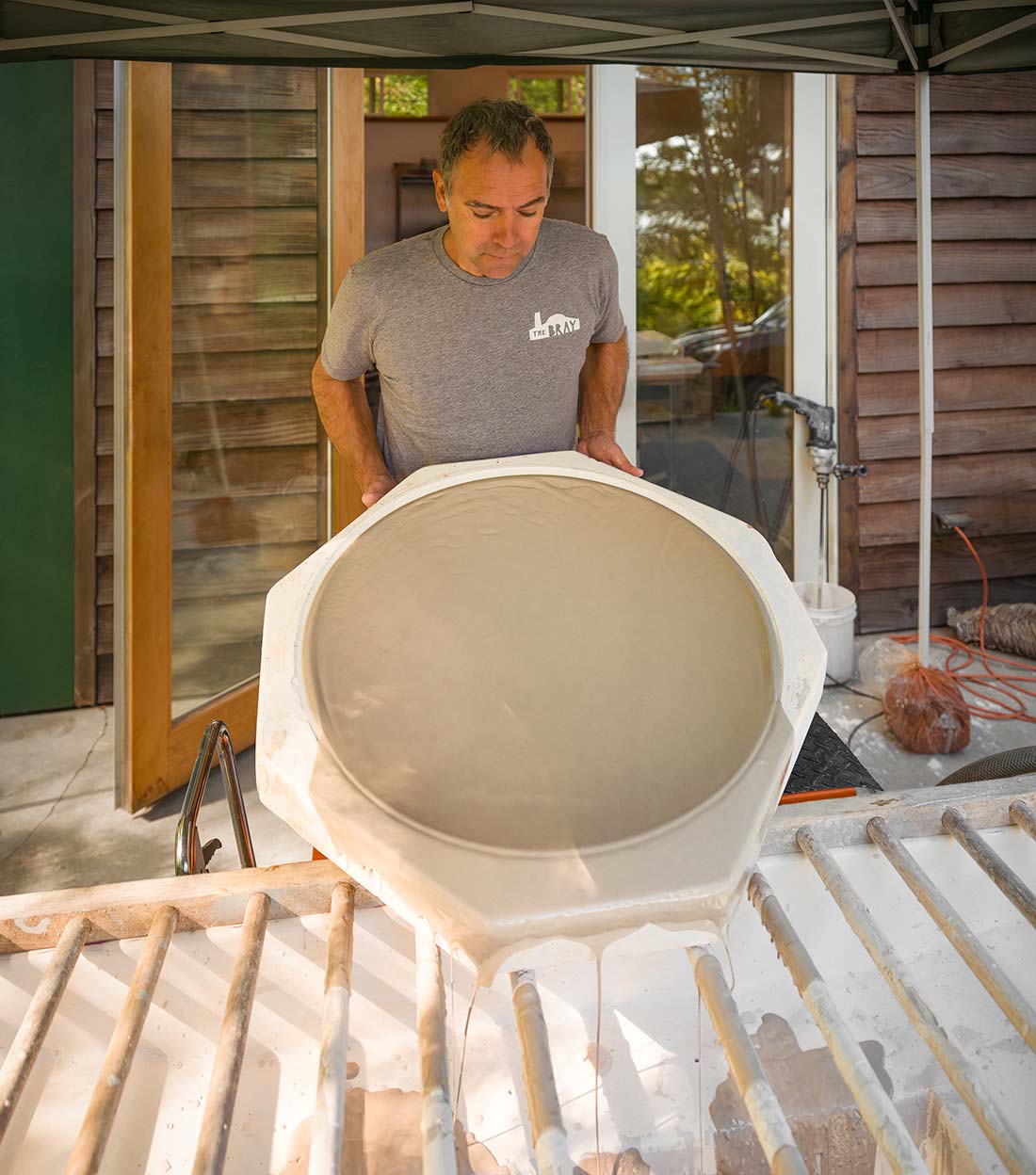
As Blackwell’s residency enters its final phase, he’s still casting more ceramics. His studio hums with mechanical sounds as he pumps liquid slip into large molds from a basin attached to a hose and nozzle. Thirty minutes later, he pours out the excess clay, and the ongoing cycle of drying, dipping, and firing continues.
SCRTS is expected to open in summer of 2026. The project will also feature artwork by Muckleshoot carvers, which you can read more about here.
